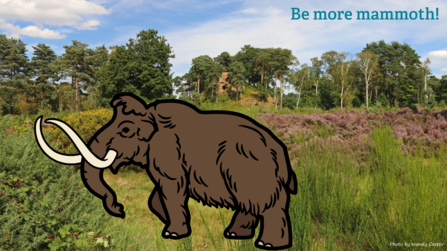Asking if you can be a mini-mammoth may seem like a strange question but on our beautiful heathland reserves, nestled between Kidderminster, Bewdley and Stourport, this is exactly what we need.
Heathland is a large open habitat that is characterised by its sandy soil and low-growing shrubs like gorse, broom and heather. Historically, heathland was maintained by large herbivores, such as bison, woolly mammoths and giant elephants, that controlled any pioneering tree species like oak and silver birch that would eventually dominate the landscape. But, sadly, we don’t have any woolly mammoths roaming around Worcestershire anymore! So, to maintain our heathlands we now need to recreate the actions of these missing large herbivores. Now, as much as I like the idea of the staff team dressing up in mammoth costumes and charging about the heathland, this isn’t quite what we mean…or so I have been told (disappointing, I know).




